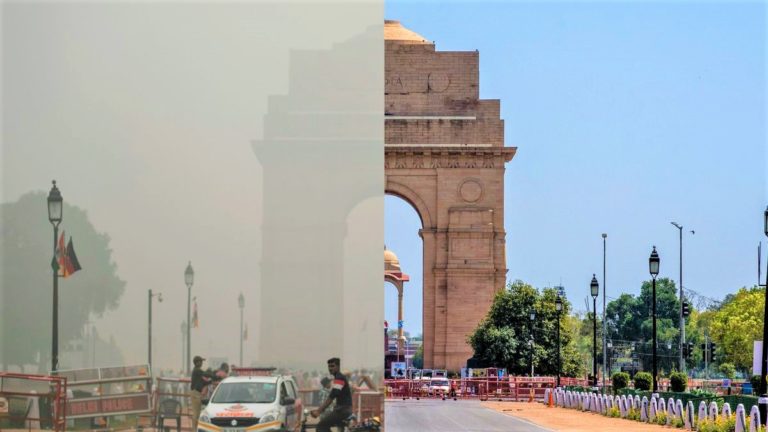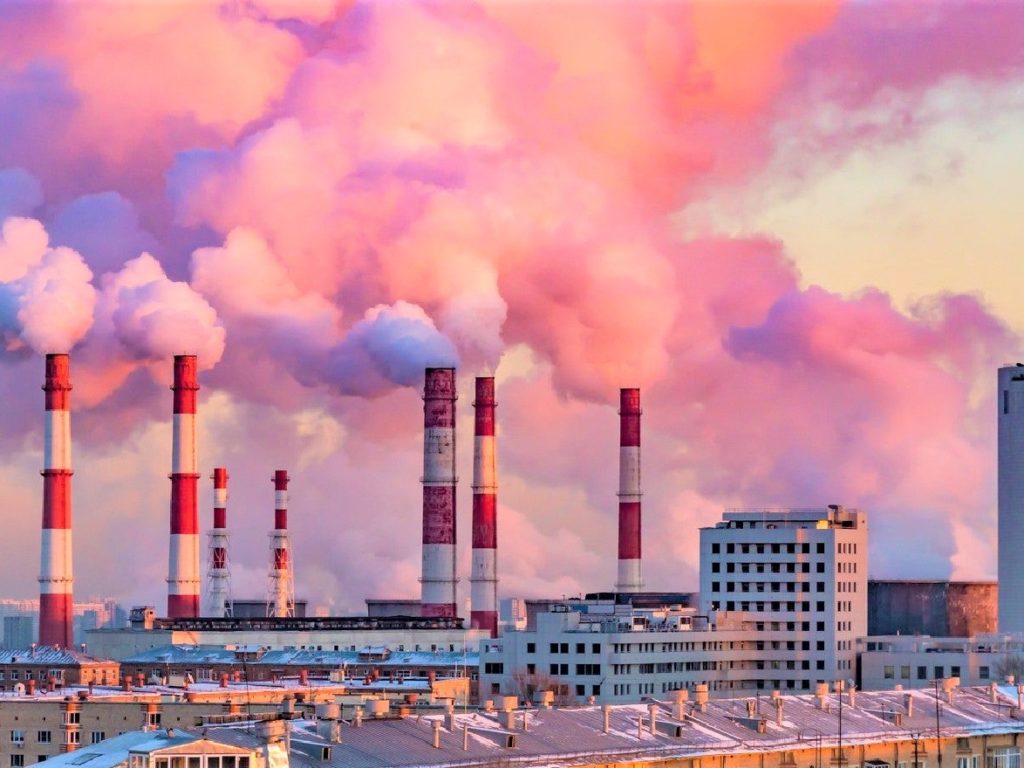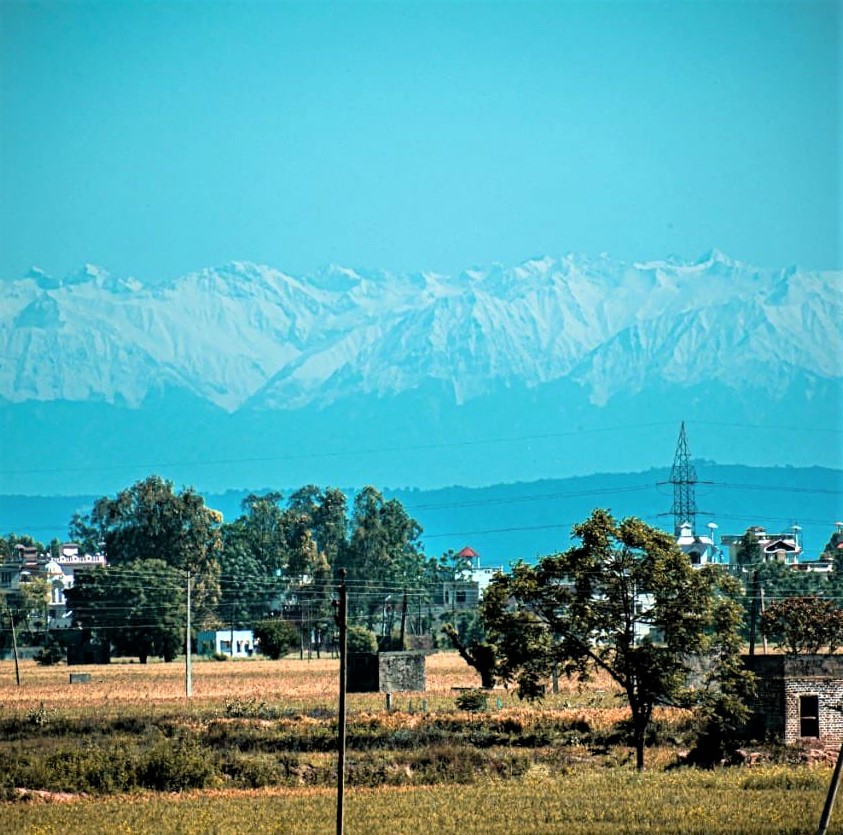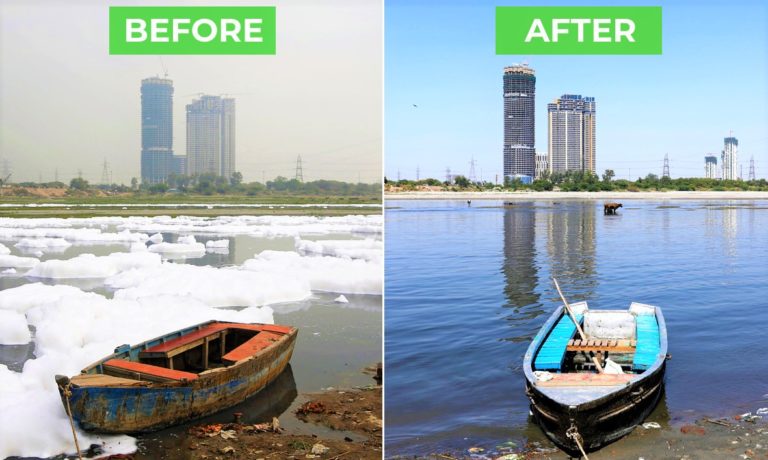Impact of Covid-19 on Environment

The world is struggling to combat an ever-increasing and ever-spreading global pandemic. Amidst all this fight against virus, there has been a staggering 60% drop in the air pollution levels in 10 of the severely polluted cities. This steep drop in the air pollution levels was caused by government-sanctioned measures to combat the new virus. This included a sudden closure of all non-essential businesses as well as other social distancing measures.
On 21st April, Earth Day, a COVID-19 Air Quality report was published by IQAir, an air quality technology company based in Switzerland. The report revealed a sharp drop in the magnitude of air pollution, approximately 60%, in 10 of the major cities in the world including New Delhi, Los Angeles, Madrid, Wuhan, New York City, Mumbai, Seoul and Sao Paulo.
A “drastic drop” in the magnitude of air pollution, when compared to the statistics of the previous year, was registered by the IQAir report. The IQAir study measured and examined the quantity of fine particulate matter, PM 2.5, present in the air, both pre-outbreak and post-outbreak. The particulate matter is harmful to the overall health of human beings. It gets embedded deep inside the lungs. Then, from there, it flows into the bloodstream and other organs.
The coronavirus pandemic has caused a global reduction in economic activity and although this is major cause for concern, the ramping down of human activity appears to have had a positive impact on the environment. Industrial and transport emissions and effluents have reduced, and various studies supports the clearing of pollutants in the atmosphere, soil and water.
Over a decade ago, after 2008 global financial crisis, carbon emissions shot up by 5 percent as a result of stimulus spending on fossil fuel used to kickstart the global economy.
The month of May, which usually records peak carbon emissions due to the decomposition of leaves, has recorded what might be the lowest levels of pollutants in the air since the 2008 financial crisis.
China and Northern Italy have also recorded significant reductions in their nitrogen dioxide levels.
Further, sources suggest that there has been a 25 percent drop in energy use and emissions in China over two weeks which is likely to decrease the overall annual carbon emissions of the country by 1 percent.

What is Fossil Fuel ?
A fossil fuel is a fuel formed by natural processes, such as anaerobic decomposition of buried dead organisms, containing organic molecules originating in ancient photosynthesis that release energy in combustion.
Fossil fuels contain high percentages of carbon and include petroleum, coal, and natural gas. Commonly used derivatives of fossil fuels include kerosene and propane.
As of 2018, the world’s main primary energy sources consisted of petroleum (34%), coal (27%), and natural gas (24%), amounting to an 85% share for fossil fuels in primary energy consumption in the world. Non-fossil sources included nuclear (4.4%), hydroelectric (6.8%), and other renewables (4% including geo-thermal, solar, tidal, wind, wood, and waste).
Although fossil fuels are continually formed by natural processes, they are generally classified as non-renewable resources because they take millions of years to form and known viable reserves are being depleted much faster than new ones are generated.
Most air pollution deaths are due to fossil fuel combustion products, and fossil fuel phase-out would save 3.6 million lives each year.
The use of fossil fuels raises serious environmental concerns. The burning of fossil fuels produces around 35 billion tonnes (35 gigatonnes) of carbon dioxide (CO2) per year. It is estimated that natural processes can only absorb a small part of that amount, so there is a net increase of many billion tonnes of atmospheric carbon dioxide per year. CO2 is a greenhouse gas that contributes to global warming and ocean acidification. A global movement towards the generation of low-carbon renewable energy is underway to help reduce global greenhouse-gas emissions.
Environmental Change in India
In India, March 22 was the ‘Janata Curfew’, following which, a significant dip in air pollution levels was measured across the country. Cities like Delhi, Bengaluru, Kolkata and Lucknow saw their average Air Quality Index (AQI) staying within two digits.
Another example of cleaner air was seen when, on April 3rd, residents of Jalandhar, a city in Punjab state, woke up to a view of the Dhauladhar mountain range, a rare feat in normal times, considering the distance between the two places- lying nearly 213 kilometres apart from each other and have not been visible from the city in recent memory.
Water bodies have also been clearing and the rivers Yamuna and Ganga have seen significant improvement since the enforcement of a nationwide lockdown. According to the real-time water monitoring data of the Central Pollution Control Board (CPCB), the average water quality of 27 points of the Ganga seen in recent days, is suitable for bathing and propagation of wildlife and fisheries.
Water of River Ganga from Devprayag to Haridwar, is even fit for drinking as per IIT Study.


There has been a “significant improvement” in the water quality of River Yamuna in the national capital during the lockdown period, thanks to polluting industries being shut and people keeping away from the river, as per an analysis done by the Central Pollution Control Board (CPCB) and submitted to the Yamuna monitoring committee, a body appointed by the National Green Tribunal.
This came a day after the Delhi Pollution Control Committee (DPCC) came out with its report based on tests of samples collected from nine locations. It, too, had concluded that the overall water quality had improved by up to 33%, though it is still not being fit for bathing.
The CPCB report is based on water samples collected from three major locations — Palla (the entry point of the river in Delhi), Nizamuddin bridge (between Wazirabad and Okhla barrages where 14 drains discharge into it) and Okhla barrage upstream (after discharge from 16 drains).
The CPCB also took samples from two major drains — Najafgarh and Shahdara — that contribute at least two-thirds of the hydraulic (sand, silt and gravel) load in the river, the report said.
The analysis indicates that there is considerable improvement in water quality, in terms of DO (dissolved oxygen), BOD (biochemical oxygen demand) and COD (chemical oxygen demand), when compared with the pre-lockdown period, at all three monitored locations.
BOD means the amount of oxygen required by the river to maintain its flow. The prescribed BOD standards are 3 milligrams per litre (mg/l). The lower the BOD, the better the water quality.
COD indicates the presence of industrial effluents in a water body. A reduction in COD means that the amount of effluents in the river is also going down.
DO is an indicator of how much oxygen is present in the river for the survival of aquatic life. The higher the DO, the better the health of the river.
The water quality of the River Ganga in Uttar Pradesh has also seemingly improved.
According to the Uttar Pradesh Pollution Control Board (UPPCB), healthy water should have a dissolved oxygen level of at least 7 mg/litre. The dissolved oxygen level upstream in river Ganga is 8.9 mg per litre while in the downstream it is 8.3 mg per litre. This clearly shows that water quality has improved significantly and is optimal for bathing.
In Kanpur as well, the Ganga has become cleaner since the lockdown has come into effect.

The priest of famous Parmat temple in Kanpur, Ajay Pujari said, “The major cause of water pollution in Kanpur is the toxic industrial waste which is discharged into the river. Since all the factories are closed due to lockdown, the Ganga river has become cleaner. The priests at the temple earlier used to refrain from taking a holy dip because the water was highly contaminated. However, since the past week, we are bathing in the river.”
“The Sisamau drain which used to discharged millions of litres of dirty water into the river was completely stopped last year under the Namami Gange project. This has also brought down the water pollution but the improvement we can witness at present is unprecedented. The lockdown has certainly improved the health of River Ganga which many projects of the government couldn’t do,” said the temple priest.
Conclusion
In conclusion, the takeaway from this is that once nations come out of impact from the coronavirus, better implementation of the environmental, transport and industry regulations should be considered a priority to ease the adverse impacts of human activity on the environment.
The international community, as it fights to regain an accepted normal, ought to take into consideration, the enlightening results of this pandemic. It would be downright irresponsible to let that knowledge take a backseat once social distancing and nationwide lockdowns are no longer required.
But sadly, the happiness won’t persist for long. The industries and cars will spew toxic fumes once again. After the lockdown restrictions are lifted, everything will fall back to square one.